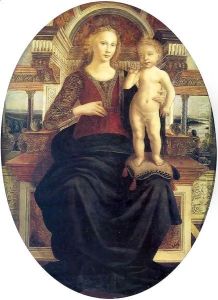Jacopo Pollaiuolo Paintings
Jacopo Pollaiuolo, also known as Jacopo di Antonio del Pollaiuolo, was an Italian painter, active during the Early Renaissance period. Born in Florence around 1441 or 1442, he was a lesser-known member of the Pollaiuolo family, which included his more famous brothers Antonio and Piero, both of whom were renowned for their contributions to art and sculpture.
Jacopo's life and career are not as well-documented as those of his brothers, and as such, details about his personal life and artistic development are somewhat obscure. What is known is that he worked closely with his brothers in their shared workshop, which was a common practice at the time. This collaboration makes it difficult to distinguish Jacopo's individual contributions from those of Antonio and Piero. Nevertheless, the Pollaiuolo brothers' workshop was highly regarded in Florence, and they received numerous commissions from influential patrons, including members of the Medici family.
The Pollaiuolo brothers were known for incorporating elements of classical antiquity into their work, and they were among the first artists to study human anatomy intensively, dissecting corpses to understand the underlying structure of the body. This scientific approach to art was innovative for the time and contributed to the development of a more naturalistic style of representation in Renaissance art.
Jacopo's own style would have been influenced by this familial approach, characterized by a strong sense of linearity and a keen interest in depicting the human form with anatomical precision. Despite the scarcity of information on his individual works, it is believed that Jacopo contributed to some of the paintings and sculptures for which the Pollaiuolo workshop was famous. These may have included the famous 'Martyrdom of Saint Sebastian' and various mythological and religious subjects.
Jacopo Pollaiuolo's death is recorded as having occurred in 1496. While his artistic legacy may not be as well-defined as that of his brothers, he remains a figure of interest within the broader context of the Florentine Renaissance, contributing to the artistic endeavors of one of the period's most respected workshops.
